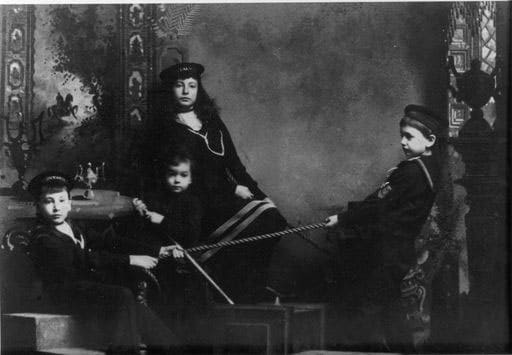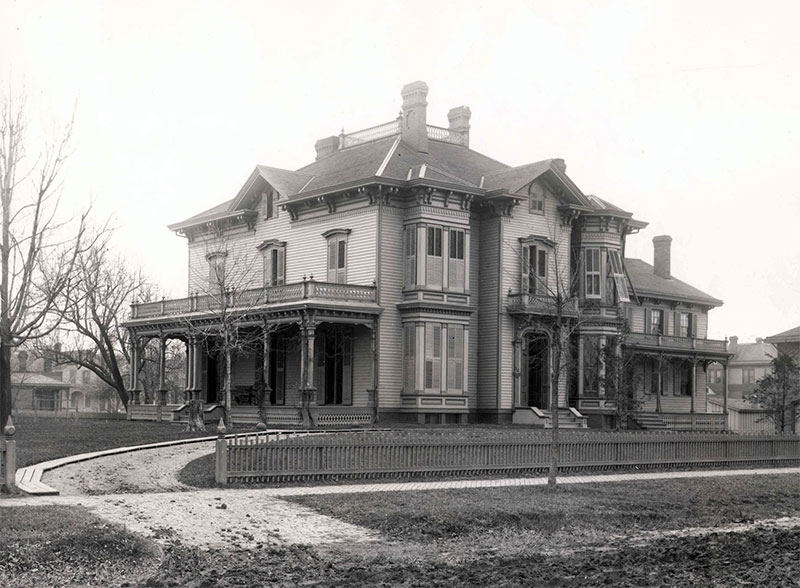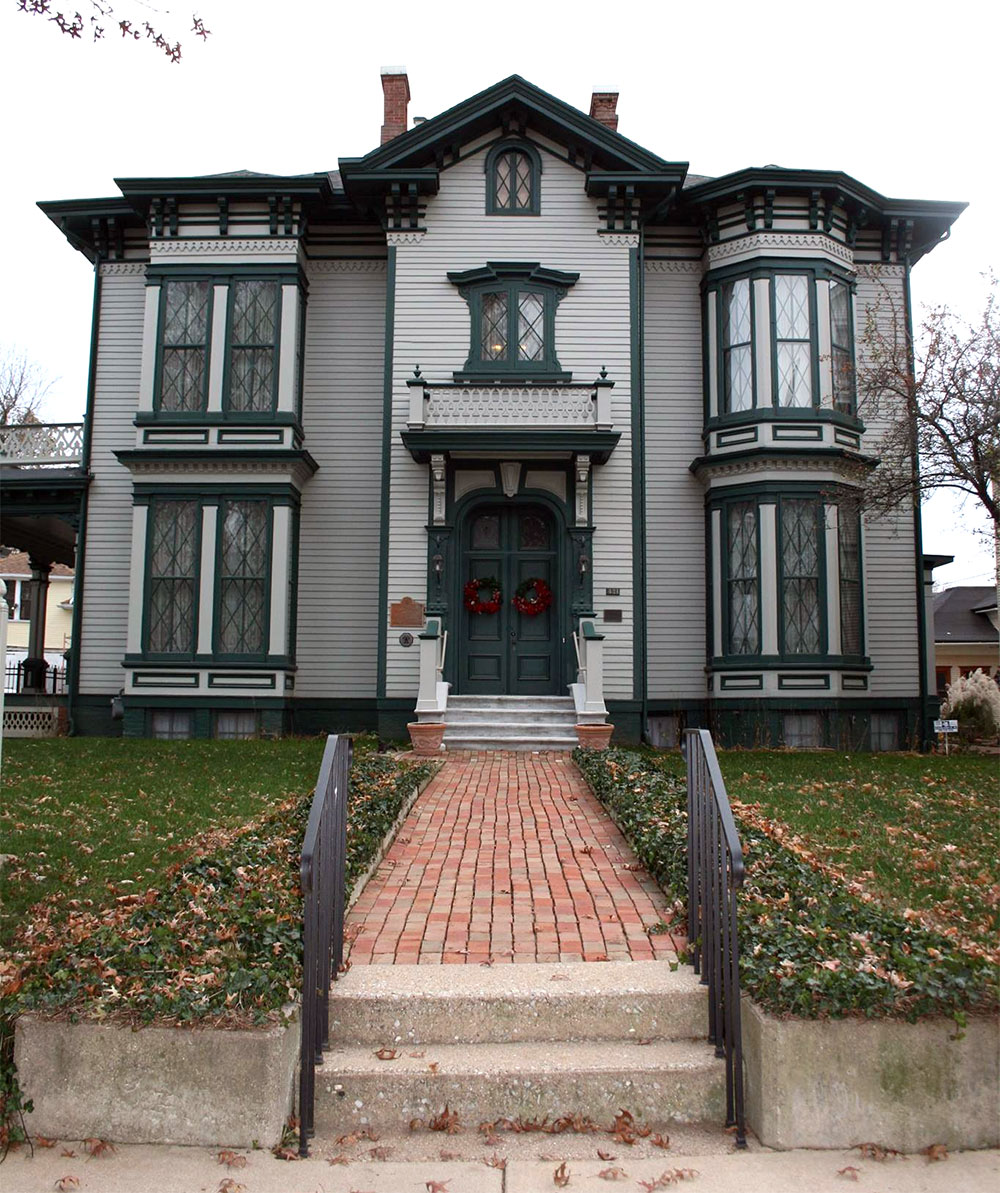History of the Oglesby Mansion
The Oglesby Legacy
Historically, Richard J. Oglesby is recognized as Decatur’s most distinguished citizen. He served his country well as a U.S. Senator, a Civil War Union General, and a three-time Governor of Illinois.
In 1859 Richard Oglesby married Anna White. They lived in a seven-room, two-story frame house in the 400 block West William. They had four children, but two died at very early ages. Anna died in 1868, and in 1873 Richard married Emma Gillett Keays, a widow with one son. Richard and Emma had four–the two youngest were born in the Mansion–and these four are pictured at right, some years after they left the house.
History of a Mansion
By 1868-69, Governor Oglesby contacted a Chicago architect, William LeBaron Jenney (father of the skyscraper) to provide plans for a new house. After Anna’s death and his return to civilian life in Decatur, the plans were put aside. The governor and his second wife, Emma, brought them back out after their marriage, modified them, and hired D.C. Shockley, a Decatur contractor, as the builder. The new house was attached to the east side of the old house, and the old one was used for a kitchen and servants’ quarters.


If These Walls Could Talk
The Oglesbys called the mansion “home” until 1882 when they moved to Lincoln, then to Elkhart where they built a much larger house on Elkhart Hill called Oglehurst. The house was sold to James E. Bering in 1882. The Berings and their descendants lived in the house for nearly a century until 1972. One of Mr. Bering’s hobbies was photography, and he left many glass slides, some which show the mansion’s interior. We have been told most of the house was not changed by the first Berings, so these pictures have been followed for the restoration process.
In 1972 the mansion was purchased by the Macon County Conservation District with a state grant. Restoration began in 1976. The care and operation of the house are under the direction of the Governor Oglesby Mansion, Inc.

Exterior Features
The house was built in the Italianate style with a low pitched roof and a widow’s walk. The decorative brackets (pictured at left) are one of the main features of the Italianate style. On the front of the house are two-story bay windows of contrasting design with diamond-shaped window panes.
At the time the house was built, there were no other houses on the South side of the street, and a carriage house sat to the west of the house. The east porch ran from the front of the house to the back and curving drive led from William Street to the front door.
Interior Features
One enters by double doors into a hall with a floor made of alternating strips of walnut and maple flooring (pictured at right). There is a curved central stairway of walnut, with a corner niche that holds a statue believed to be original to the house.
The main floor features a library, dining room, parlor, sun porch, and kitchen. The second floor was the family’s private space, containing several bedrooms. Eleven-foot ceilings are emphasized by long, narrow windows and french doors. There are eight fireplaces. All the mantels are original with the exception of the parlor which is a reproduction of the original. The light fixtures were originally gas, and the parlor and library fixtures are original to the house. There are pocket doors between the parlor and library and between the hall and dining room.


The Mansion Today: A Masterpiece Restored
The Library is the most significant room in the house regarding authenticity. It remains as it was built. All the wood is of native black walnut, with the exception of the parquet floor. The original shutters have been reproduced, and glass doors were added to the shelves which were on the architect’s drawings. The books in the cases are Oglesby family books.
The dining room is the other area that is known to be correct. During the restoration, the complete decoration of the room was found, even the color of the ceiling and all the faux finishes. This room has been reproduced as it was during the Oglesbys’ time in the house.
The dining room wallpaper was reproduced by a company that was making authentic Victorian wallpapers. All the walls with the exception of the hall and the library are covered with Bradbury and Bradury Wallpaper copied from papers of the time period.
Furnishings in the home have been chosen for the time period 1860-1885. Most came from old Decatur families. Many of the pieces and the artifacts have come from Oglesby descendants.
Through the years, there have been some structural changes. In 1905 the older house was removed and relocated elsewhere. In its place, a small porch was added to the west side of the house. In the restoration of the dining room, a wall that enclosed a butler’s pantry and a stairwell to the basement were removed to make the dining room correct. A greenhouse had been added at the time the Bering-Evans families lived here. Though this is not historically correct, it has been kept for its usefulness. A modern bath and kitchen have been added to make the house usable to the public. The south-east corner of the second floor is now a caretaker’s apartment.
The house is on the National Register of Historic Places.

